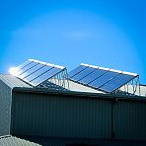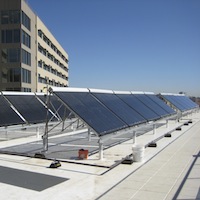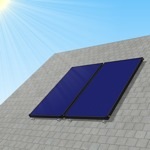Feb 19th, 2018
Nov 12th, 2015
Solar PV Systems
Introduction to PV
Solar photovoltaic systems, commonly referred to as solar PV systems, convert sunlight directly into electricity. This is different to the solar thermal collectors for solar water heaters. A solar PV system can help reduce carbon emissions and your electricity bill by producing sustainable electricity from the sun instead of burning fossil fuels. Apricus offers a range of solar PV products to help you harness the power of the sun for commercial, industrial and residential electricity applications of all sizes.
Most electricity is distributed through an electrical utility provider, the company that produces and/or distributes electricity to consumers. The electricity from a variety of sources is distributed along the electrical grid and can span hundreds of miles from the power plants to homes and businesses. This grid network is not always reliable due to overloading, severe weather, and maintenance or upgrades. Installing a PV power system allows you to create your own electricity to supply your entire home or business and can potentially eliminate the issues associated with large utility grids. The amount of electricity generated is dependent on several factors: the size and arrangement of the PV power system, the PV module type, the available sunlight, and the efficiency of the electrical components used to covert solar energy into electricity usable by your home or building.
How PV Systems Work
Grid-connected PV System
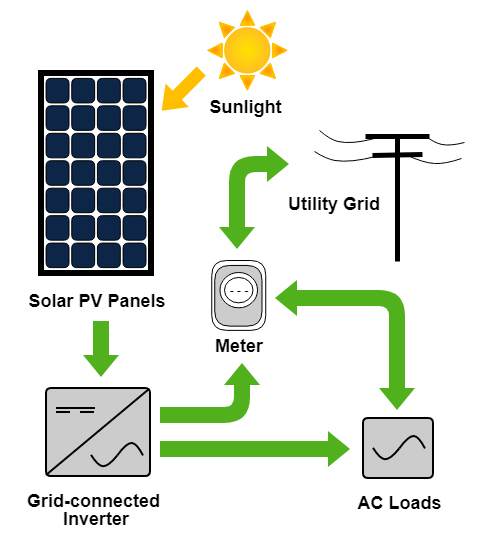
The grid-connected solar photovoltaic (PV) system is a common and cost-effective option to reduce electricity bills and emissions. It consists of PV modules, a grid-connect inverter, associated mounting hardware, and electrical cables and safety devices. You can generate your own renewable energy on site, and supplement your electricity needs from the local utility grid when the PV system is not supplying enough energy. You can also export excess electricity back to the utility company when the PV system is generating more electricity than you need during daylight hours. The way this exported electricity is metered and the rate of financial return varies by country, state, local district, and utility provider. The downside of this system configuration is that you are still connected to the grid. Depending on local regulations the system will automatically shut down if the grid becomes unavailable, meaning you will not produce any solar power during this time, and would still experience blackouts. You would also only use solar power during daylight hours with good solar irradiation, so at night and on cloudy days you would still draw power from the grid and pay an electricity bill.
Grid-connected PV System with Batteries
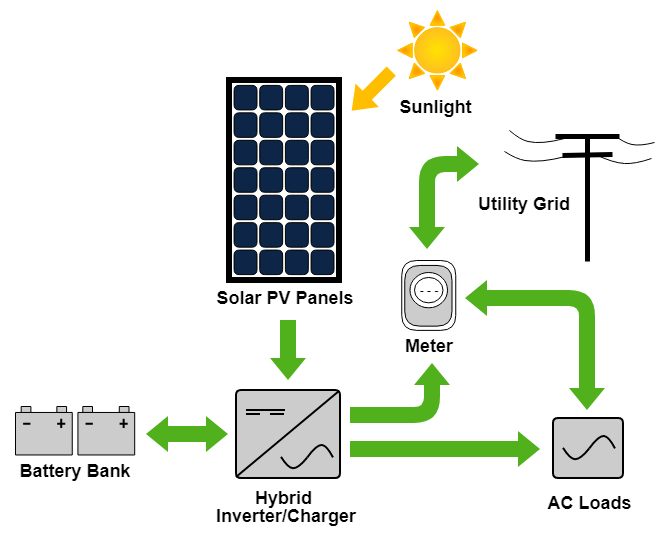
A grid-connected photovoltaic (PV) system with batteries gives you the best of both worlds. The PV modules can be used to charge a battery bank during the day, and then provide this electricity to your home or business whenever it is needed (day or night). Maintaining a connection to the grid also allows for electricity to be supplied during periods of high use or when the weather is bad for extended periods. Depending on local regulations and government incentives, you may be able to export electricity from your battery bank at times when the utility provider needs it most, and attract a higher rate of return for that solar power. This system could also be configured to supply DC loads from the battery bank.
Off-grid PV System
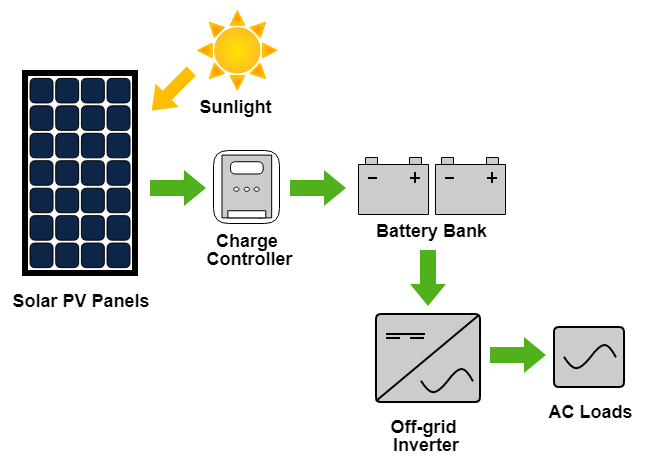
The off-grid solar photovoltaic (PV) system can be extensively applied in remote locations, and other areas not covered by the main power grid. The PV modules generate electricity that is used to charge batteries during sunlight hours. This can then power DC loads directly or be provided to the AC load through the inverter. This system configuration provides independence from the utility grid however there are limitations on the days of autonomy and the size of the loads that can be supplied by batteries and inverters on their own.
For some applications where small amounts of electricity are required, like emergency call boxes and UPS systems, PV systems are often cost justified even when the grid is accessible. When applications require larger amounts of electricity and are located away from existing power lines, PV systems can in many cases offer the least expensive and most viable option.








